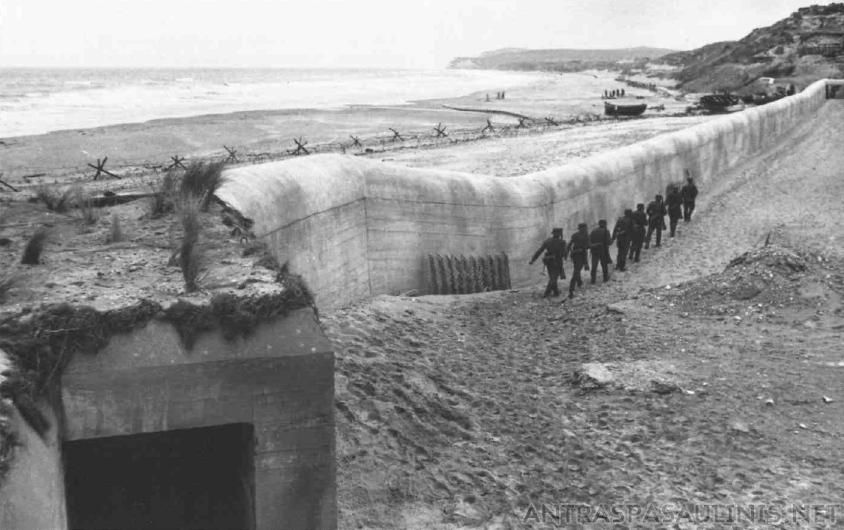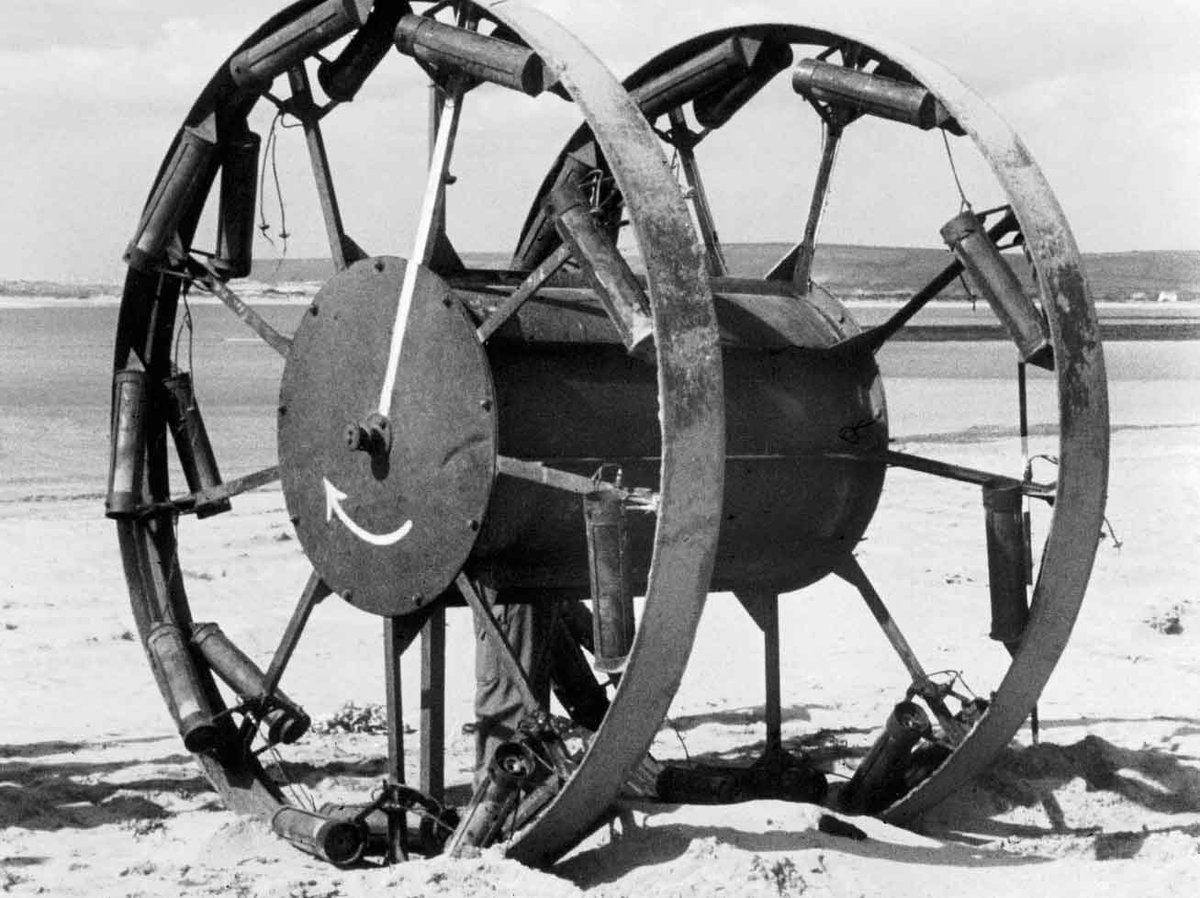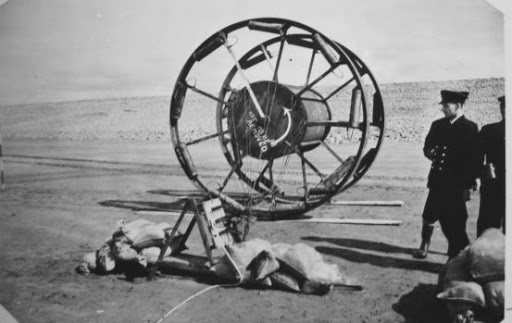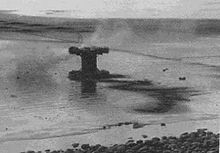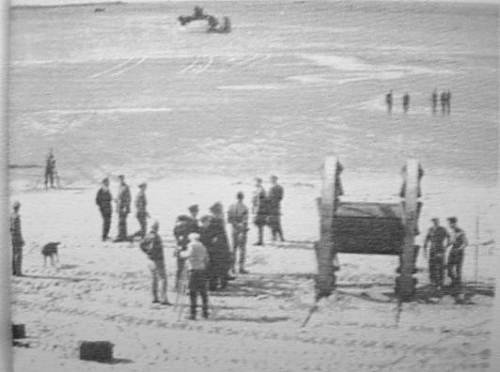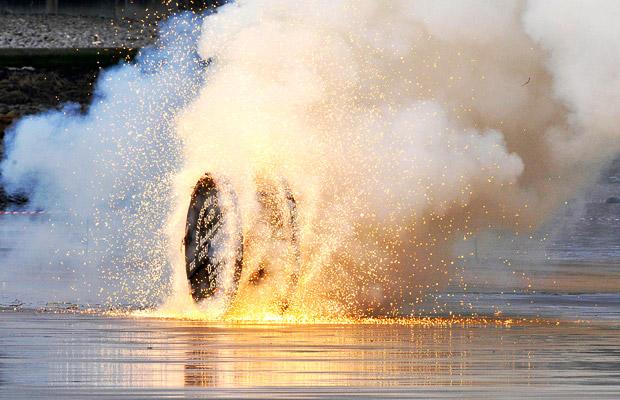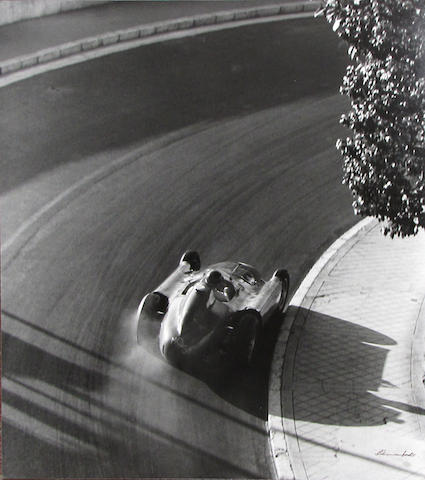This thing here, lurching across a beach with all the control, poise and decorum of a presidential debate, is the Panjandrum.
It& #39;s worth reviewing how it got there...
It& #39;s worth reviewing how it got there...
In the early 1940s, French beaches were extremely hostile towards British and American holidaymakers. Presumably faced with the terrible prospect of having to visit Blackpool instead, the Royal Navy decided to do something about it.
Most military problems are resolved by the application of large amounts of explosive materials, and this was to be no exception. Calculations by Neville Shute - novelist, engineer, and airship-builder - suggested a ton or two of TNT ought to do the trick.
The search for an engineer capable of carrying a 2 ton charge of TNT presumably proving fruitless, some sort of method for moving it up the beach was required.
It& #39;s at this point things started to go wrong.
It& #39;s at this point things started to go wrong.
I could spend quite a lot of time pondering the question before the answer "bolt two wheels and the contents of a fireworks factory to it" came across my mind, and after it did I& #39;d be sure to file it away from impressionable minds.
Shute and his crew of loveable explosive maniacs were made of stronger stuff. In retrospect it& #39;s a shame that the Panjandrum wasn& #39;t.
Decamping to Westward Ho! - famously the only English place to simultaneously have an exclamation mark and sound like a rapper giving directions - the tests began in utmost secrecy.
Ah who am I kidding? The beach was totally open and increasingly large crowds would arrive to see what happened next.
The answer was usually "chaos".
The answer was usually "chaos".
On the first test the Panjandrum lurched up the beach before shedding a load of rockets, turning 90 degrees, and chasing the watching boffins along the beach.
A pattern had already begun to form...
A pattern had already begun to form...
To resolve the directional issue, the men in white coats took the non-obvious step of adding more rockets.
The results were not noticeably improved, although doubtless the regular running for cover was at least improving everyone& #39;s fitness.
The results were not noticeably improved, although doubtless the regular running for cover was at least improving everyone& #39;s fitness.
The next step was to add a trailing carriage in the hope it would act as a rudder. On the first attempt the Panjandrum was observed to avoid its customary 90-degree swerve.
This time it did a full 180 and headed back out to sea.
This time it did a full 180 and headed back out to sea.
The next innovation was to add reins to the Panjandrum in the hope it could be steered.
Spoiler: It couldn& #39;t. It invariably broke free, adding massive steel tentacles lashing everywhere to its growing list of terrors.
Spoiler: It couldn& #39;t. It invariably broke free, adding massive steel tentacles lashing everywhere to its growing list of terrors.
Concluding that their brief of moving a large amount of explosives from A to B was satisfied by the fact that the Panjandrum at least left point A, and ignoring the fact that point B was essentially unknowable, Shute and his gang invited their superiors to take a look.
On the appointed date everyone was relieved to see the demonstration Panjandrum leave the water impeccably.
Unfortunately the stresses in the rockets were already starting to relieve themselves in other ways. First one rocket, then two, then increasing numbers came flying off the wheels in random directions.
Now out of control, the Panjandrum executed a perfect turn towards the brass hats, scattering them in all directions, before exploding in a final display of contempt.
As the smouldering wreckage cooled, the admirals made their decision. Whatever the hell Hitler had waiting for them over on the other side of the Channel, it couldn& #39;t possibly be worse than the items their engineers were serving up here.
Panjandrum was cancelled.
Panjandrum was cancelled.

 Read on Twitter
Read on Twitter